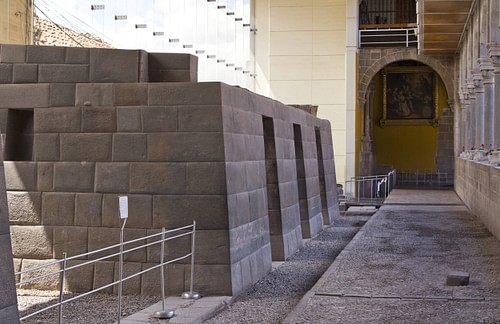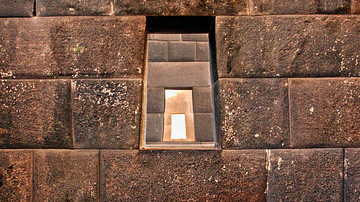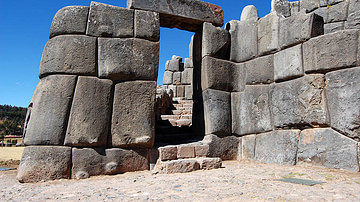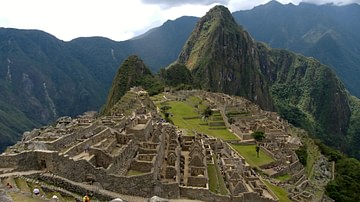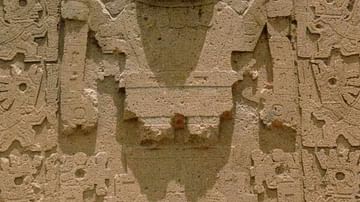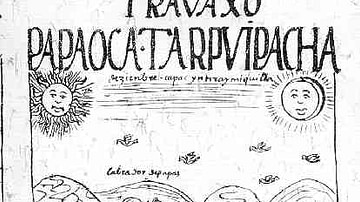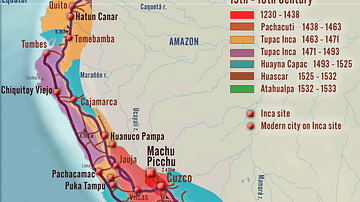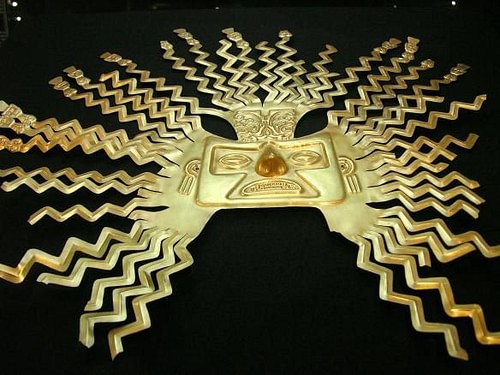
Inti was the Inca god of the sun and considered all-powerful but he was also a benevolent god and capable of great generosity. However, Inti could be angered and he would demonstrate his displeasure through solar eclipses which necessitated sacrifices to win back the god's good favour. Inca rulers considered themselves direct descendants of Inti, the patron of empire and military conquest.
Inti's Relations & Role
Inti was the sun, which in Inca mythology was created by the supreme Inca deity Viracocha from an island on Lake Titicaca. Although Viracocha was higher in status, he usually remained in the background of worldly affairs and allowed intermediaries such as Inti to actually govern the world. Inti was married to the goddess of the moon Quilla. Neatly linking the gods to mankind, the first Inca leader and founder of the civilization, Manoc Capac (previously called Ayar Manco) was believed either to have been instructed by Inti or actually been his son, along with the other original Inca ancestors such as Mama Coya (a.k.a. Mama Ocllo) who was also described as Inti's wife in some versions of the myth. In this way the successive Inca rulers could claim divine lineage and emphasise their role as intermediary between the gods and ordinary people. Manoc Capac even wore a sheet-gold costume to impress the populace with his divine parentage. However, it was not until Wiraqocha Inca (c. 1425 CE) or the 9th Inca ruler Pachacuti Inca Yupanqui (1438-1471 CE) that the cult of Inti really became established in the cultural practices of the Inca. With the expansion of the Inca empire sun worship was incorporated into the religions of the conquered peoples and used as an imperial propaganda that the Inca were the people with a divine right to rule.
The Coricancha
The Coricancha temple ('House of the Sun') and Sacsahuaman sacred precinct at the Inca capital of Cuzco were dedicated to Inti and probably built in the reign of Pachacuti. It was here that the most senior figure in the Inca religion, the High Priest of the Sun (Villac Umu), presided over rites in honour of Inti, assisted by acllas (or acyllyaconas) - young virgin priestesses. There were also sun ceremonies carried out by both male and female priests at sacred sites across the empire. Perhaps the most famous example is at Machu Picchu where a typical intihuatana or 'hitching post of the sun' situated at the highest point of the sacred precinct was used during the solstices to symbolically connect the sun to the earth using a special cord. The intihuatana were also used for regular astronomical observations of the sun and possibly other heavenly bodies. Other important temples were at Pisac (north-east of Cuzco), Ingapirca (in modern Ecuador), and on the Island of the Sun on Lake Titicaca which Inca rulers visited once a year in pilgrimage.
Inti Raymi
Inti was especially worshipped during the festival of Inti Raymi held during the winter solstice in June and run over several days. One of the most common sacrifices to Inti was of white llamas but offerings of food, other livestock and even areas of farmland were also dedicated to the god. There were human sacrifices too (including child sacrifice) on special ceremonial occasions or in times of particular crisis such as earthquakes or a death in the royal family. Such ceremonies were designed to ensure the continued success of the Inca empire, its people and their harvests. One curious story is when an eagle was attacked by buzzards and fell from the skies during a ceremony in honour of Inti held in c. 1526 CE which was thought to foretell the collapse of the Inca empire. It was, indeed, around this time that the first signs of the deadly smallpox disease brought by the Spanish conquistadors from the Old World began to appear amongst the Inca population and it would be less than a decade before the Inca capital fell into Spanish hands.
Representations in Art
Inti was not often represented in Inca art but when he was it was usually as a gold statue, a sun disk or a golden mask. Gold was particularly associated with the god as it was believed that the precious metal was the sweat of the sun. The most sacred statue of Inti was kept in his shrine at Cuzco. The interior of this temple was a wonder in itself as it was lined with 700 half-metre panels of beaten gold whilst outside was a life-size scene of a field of corn with llamas and shepherds all made from gold and silver. The statue represented Inti as a small seated boy, called Punchao (Day or Midday Sun). From his head and shoulders the sun's rays shone, he wore a royal headband and had snakes and lions coming out of his body. The stomach of the statue was hollow and used to store the ashes of the vital organs of previous Inca rulers. Everyday this statue was brought out into the open air and returned to the shrine each night. The statue was taken to a place of safety when the Spanish arrived in the 1530s CE but it seems that they did eventually find it in 1572 CE but it disappeared without trace, probably melted down like so many other Inca artefacts.
The masks of Inti were typically made of thinly beaten gold and also had the sun's rays bursting from the god's head in a design common in pre-Inca deity masks. These rays were typically cut in a dramatic zig-zag fashion and sometimes ended in a small human face or figure. The most famous such mask was on display within the Coricancha temple at Cuzco.
The god's worshippers and the vast majority of the art made in his name have long since disappeared but Inti lives on in several present day South American cultures. The festival of Inti Raymi has been revived as a great yearly festival in Cuzco, several national flags bear an image of him in the form of a flaming sun, and the currency of Peru in the 1980s CE was called the inti and even now still references him with its new name sol - sun in Spanish.
